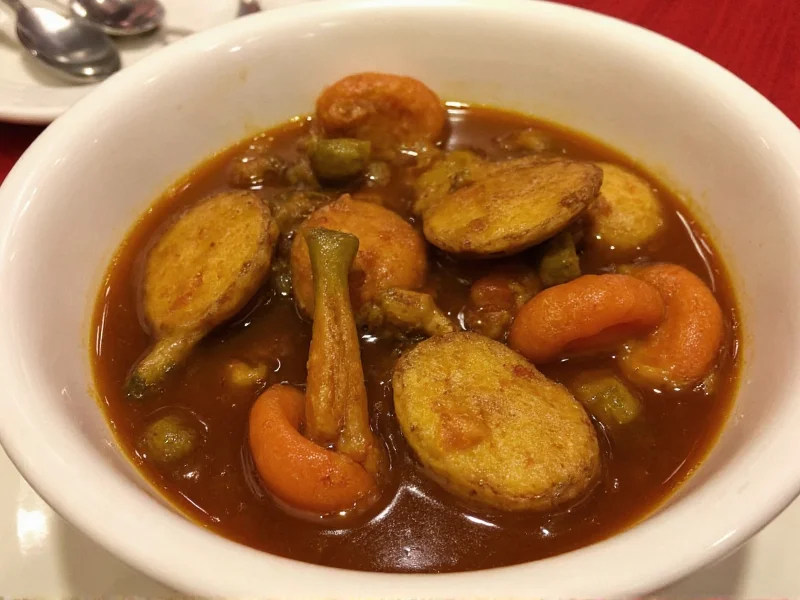For generations, turtle soup represented one of New Orleans' most distinctive culinary traditions, embodying the city's resourceful approach to local ingredients. This rich, dark broth with tender meat pieces was once a staple in fine dining establishments throughout the Crescent City, particularly during the late 19th and early 20th centuries when it graced the menus of legendary restaurants like Antoine's and Commander's Palace.
A Historical Delicacy of Louisiana
Turtle soup emerged as a signature dish during New Orleans' French colonial period, when settlers adapted European culinary techniques to local ingredients. The alligator snapping turtle, abundant in Louisiana's bayous and rivers, provided the primary ingredient for what would become a culinary institution. By the 1800s, turtle soup had evolved into a sophisticated preparation featuring a dark, almost black broth achieved through careful reduction and the addition of traditional Creole seasonings.
Historical records show that turtle soup gained particular prominence after the Louisiana Purchase, when American influences blended with existing French and Spanish culinary traditions. The dish became associated with special occasions and fine dining, often served as the first course in elaborate multi-course meals at New Orleans' most prestigious restaurants.
Traditional Preparation Methods
The authentic preparation of New Orleans turtle soup involves several distinctive techniques that set it apart from other regional variations:
| Traditional Element | Modern Adaptation | Reason for Change |
|---|---|---|
| Alligator snapping turtle meat | Alligator meat or legal turtle species | Conservation laws protecting endangered species |
| Extended 8-12 hour reduction | 6-8 hour preparation with modern equipment | Time constraints in contemporary kitchens |
| Traditional "roux noir" (black roux) | Maintained in authentic preparations | Essential for characteristic flavor and color |
| Sherry added tableside | Often incorporated during preparation | Streamlining service in modern restaurants |
The signature element of authentic New Orleans turtle soup is its deep, almost black color achieved through a carefully prepared "roux noir" (black roux), which requires constant attention as flour and fat are cooked together until they reach a dark chocolate color without burning. This forms the flavor foundation for the soup, which is then enriched with turtle meat, vegetables, and a blend of Creole seasonings.
Conservation Concerns and Modern Adaptations
By the mid-20th century, conservation concerns emerged as turtle populations declined due to overharvesting. The alligator snapping turtle, once plentiful in Louisiana waters, became classified as a threatened species, leading to strict regulations on harvesting. Federal and state protections implemented in the 1970s and 1980s significantly restricted the use of native turtle species in commercial food preparation.
Today, restaurants serving "turtle soup" in New Orleans typically use one of several approaches:
- Substituting alligator meat, which provides a similar texture and is sustainably farmed in Louisiana
- Using legally sourced turtle meat from non-endangered species raised on farms
- Creating vegetarian versions that mimic the rich, complex flavor profile
- Offering the soup only seasonally or by special request due to ingredient sourcing challenges
Where to Experience Turtle Soup in Contemporary New Orleans
While no longer a common menu item, authentic New Orleans-style turtle soup can still be found at select establishments that maintain culinary traditions. Several historic restaurants offer it as a specialty dish, often requiring advance notice due to the time-intensive preparation process.
Visitors seeking an authentic turtle soup experience should look for restaurants with longstanding reputations in Creole cuisine. Many establishments now clearly indicate whether they use traditional ingredients or modern substitutes, providing transparency about their sourcing practices. The best places to find this historic dish typically have menus that emphasize Louisiana's culinary heritage and maintain connections to traditional preparation methods.
Cultural Significance Beyond the Plate
Turtle soup represents more than just a menu item in New Orleans—it embodies the city's adaptive culinary philosophy. When European techniques met Louisiana's unique ecosystem, cooks transformed local ingredients into sophisticated dishes that became cultural touchstones. The evolution of turtle soup from abundant local resource to protected specialty reflects broader changes in environmental awareness and sustainable practices within the culinary world.
Food historians note that turtle soup's journey mirrors New Orleans' own cultural evolution—adapting traditions while maintaining core identity. The careful preservation of preparation techniques, even as ingredients change, demonstrates the city's commitment to honoring culinary heritage while responding to contemporary concerns.
Preserving a Culinary Legacy
The story of turtle soup in New Orleans illustrates how culinary traditions evolve while maintaining their essence. Chefs committed to preserving this historic dish have developed methods that honor traditional flavors while respecting modern conservation principles. This balance between tradition and adaptation remains central to New Orleans' ongoing culinary narrative.
For those interested in experiencing this piece of living culinary history, seeking out restaurants that transparently share their preparation methods and ingredient sources provides the most authentic contemporary interpretation of this classic New Orleans dish.











 浙公网安备
33010002000092号
浙公网安备
33010002000092号 浙B2-20120091-4
浙B2-20120091-4